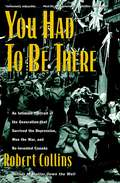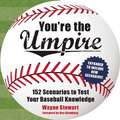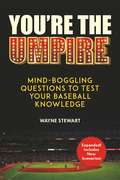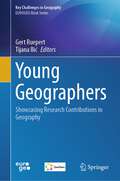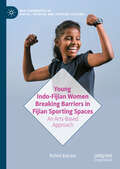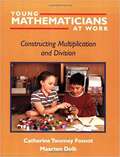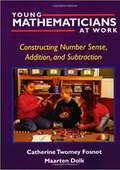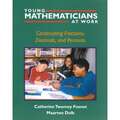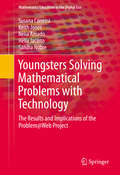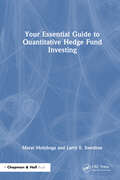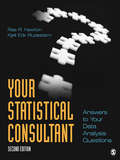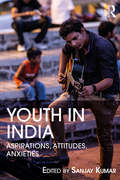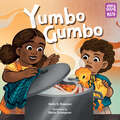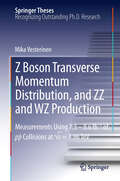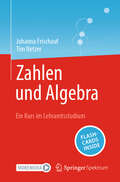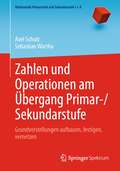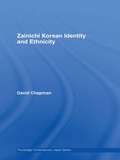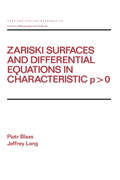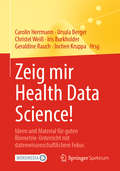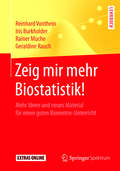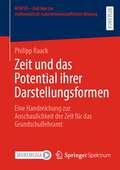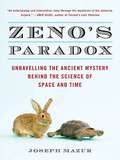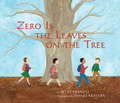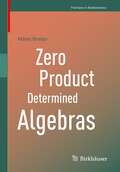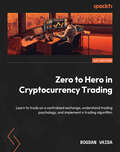- Table View
- List View
You Had to Be There
by Robert CollinsThey gained their maturity in an age of monumental and unprecedented change – from horse-and-buggy, Model TFord, and crank telephone, to moonwalks, space shuttles, and the Internet. They are better educated, more affluent, more vigorous, and longer-lived than any generation before them, yet obstinately cling to a forthright simplicity no generation is likely to regain. They are proudly “old fashioned” in their outlook, hardworking, and frugal in their ways. They are the last enthusiastic patriots, the last to accept authority with respect. They are the last generation to have reached adulthood without television, credit cards, computers, or the Pill. Their younger critics may call them “old fogies”; Robert Collins calls them Generation M, formature. InYou Had to Be There, Robert Collins gives us the entire history of this extraordinary and hugely influential generation. Through this fascinating story he weaves the voices of Canadians from across the country, who speak with humour, regret, and passion about the hardships and triumphs of their lives and about the widening gap between themselves and the rest of Canada. Generation gaps are as old as humankind, but rarely has there been as much misunderstanding and veiled animosity as there is between young and old today. Robert Collins accounts for the prejudices, pokes fun at the rivalries, and, with humour and sympathy, invites younger Canadians to re-examine their parents’ or grandparents’ lives and consider, maybe for the first time, the true proportion of their legacy.
You're the Umpire: 152 Scenarios to Test Your Baseball Knowledge
by Wayne Stewart Ron BlombergDo you think you have what it takes to be a Major League umpire? Well, now you can test your knowledge of the game with Wayne Stewart’s You’re the Umpire.Divided into three sections, this unusual handbook, now in its second edition, offers "Routine Calls," which deal with scenarios and rules that typically come up in games and deal with clear cut rules-fair and foul, strike zone questions, and the like. The next section, "Basic Situations," deals with umpiring matters and rules that are just a bit more unusual or, for the casual fan, obscure. Interference and obstruction calls, for example, don’t come up too often, but they remain standard stuff involving rules that umps and many fans know quite well. In the final section, "Obscure Rules and Situations," you will be presented with what many baseball people call "knotty” problems. Here, you will be asked questions involving the complex infield fly rule and other arcane matters. This section, then, is the ultimate test of your umpiring skills and knowledge.Most of the situations in You’re the Umpire come from real games, but some scenarios are made up to illustrate specific points or rules. Test yourself against your friends or against the famously iconic baseball rulebook. It’s a challenge and it’s fun.Skyhorse Publishing, as well as our Sports Publishing imprint, are proud to publish a broad range of books for readers interested in sports-books about baseball, pro football, college football, pro and college basketball, hockey, or soccer, we have a book about your sport or your team.Whether you are a New York Yankees fan or hail from Red Sox nation; whether you are a die-hard Green Bay Packers or Dallas Cowboys fan; whether you root for the Kentucky Wildcats, Louisville Cardinals, UCLA Bruins, or Kansas Jayhawks; whether you route for the Boston Bruins, Toronto Maple Leafs, Montreal Canadiens, or Los Angeles Kings; we have a book for you. While not every title we publish becomes a New York Times bestseller or a national bestseller, we are committed to publishing books on subjects that are sometimes overlooked by other publishers and to authors whose work might not otherwise find a home.
You're the Umpire: Mind-Boggling Questions to Test Your Baseball Knowledge
by Wayne StewartDo you think you have what it takes to be a Major League umpire? Well, now you can test your knowledge of the game with Wayne Stewart’s You’re the Umpire. Divided into three sections, this unusual handbook, now in its third edition, offers Routine Calls, which deal with scenarios and rules that typically come up in games and deal with clear-cut rules—fair and foul, strike zone questions, and the like. The next section, Basic Situations, deals with umpiring matters and rules that are just a bit more unusual or, for the casual fan, obscure. Interference and obstruction calls, for example, don’t come up too often, but they remain standard stuff involving rules that umps and many fans know quite well. In the final section, Obscure Rules and Situations, you will be presented with what many baseball people call “knotty” problems. Here, you will be asked questions involving the complex infield fly rule and other arcane matters. This section, then, is the ultimate test of your umpiring skills and knowledge. Most of the situations in You’re the Umpire come from real games, such as the time a fastball from Randy Johnson killed a bird in flight and what the umps did regarding that pitch, but some scenarios are made up to illustrate specific points or rules. Test yourself against your friends or against the iconic baseball rulebook. It’s a challenge and it’s fun.
Young Geographers: Showcasing Research Contributions in Geography (Key Challenges in Geography)
by Gert Ruepert Tijana IlićThis book shows an updated overview of research about human geography topics like urban growth/urban challenges, transportation, landscape, land cover, geospatial analysis, regional planning/local development, cultural geography, tourism, and so on. Between 2020 and 2022, due to COVID-19 and lockdowns worldwide, there were fewer opportunities for young and upcoming researchers to present their state-of-the-art findings at conferences. In order to highlight exceptional research of young geographers during this time, the idea for this book was created. In collaboration with the EGEA alumni foundation for students and young geographers, 12 authors were selected to showcase their scientific work. In addition to that, most of them present amazing maps and figures as outstanding expression of the need of GIS for geography research.
Young Indo-Fijian Women Breaking Barriers in Fijian Sporting Spaces: An Arts-Based Approach (New Femininities in Digital, Physical and Sporting Cultures)
by Rohini BalramThis book explores the gendered and racial lived everyday and sporting experiences of Brown migrant young women and girls in Fiji. The author empirically employs a novel visual and arts-based research methodology (ABRM) and arts-based method (ABM) to collect and present the data. Carefully woven non-fiction creative pieces sourced from semi-structured interviews and reflexive ethnographic observations from fieldwork bring to the forefront the voices of Indo-Fijian women and girls. Using an intersectional approach from Gayatri Spivak to Nirmal Puwar, Raewyn Connell and Judith Butler, the author illuminates the triple layer of the marginalities Indo-Fijian women and girls experience in the sporting arena within a settler-colonial context. The book shows the agency of young athletic Indo-Fijian women and how they collectively challenge hegemonic masculinities in sports. This highly timely and original book therefore contributes qualitative intersectional research to the growing body on literature of sporty women of colour in the Global South. It thus appeals to scholars and students of sociology of sports, race and ethnicity, diaspora studies, gender studies, anthropology, as well as the history of Oceania and South Asia.
Young Mathematicians At Work: Constructing Multiplication And Division
by Catherine Twomey Fosnot Maarten DolkIn our efforts to reform mathematics education, we've learned a tremendous amount about young students' strategies and the ways they construct knowledge, without fully understanding how to support such development over time. The Dutch do. So, funded by the NSF and Exxon Mobil, Mathematics in the City was begun, a collaborative inservice project that pooled the best thinking from both countries. In Young Mathematicians at Work, Catherine Fosnot and Maarten Dolk reveal what they learned after several years of intensive study in numerous urban classrooms. In this second volume in a series of three, Fosnot and Dolk focus on how to develop an understanding of multiplication and division in grades 3-5. Their book: describes and illustrates what it means to do and learn mathematics provides strategies to help teachers turn their classrooms into math workshops that encourage and reflect mathematizing examines several ways to engage and support children as they construct important strategies and big ideas related to multiplication takes a close look at the strategies and big ideas related to division defines modeling and provides examples of how learners construct modelswith a discussion of the importance of context discusses what it means to calculate using number sense and whether or not algorithms should still be the goal of computation instruction describes how to strengthen performance and portfolio assessment emphasizes teachers as learners by encouraging them to see themselves as mathematicians.
Young Mathematicians At Work: Constructing Number Sense, Addition, And Subtraction
by Catherine Twomey Fosnot Maarten DolkIn our efforts to reform mathematics education, we've learned a tremendous amount about young students' strategies and the ways they construct knowledge, without fully understanding how to support such development over time. The Dutch do. So, funded by the NSF and Exxon, Mathematics in the City was begun, a collaborative inservice project that pooled the best thinking from both countries. In Young Mathematicians at Work, Catherine Fosnot and Maarten Dolk reveal what they learned after several years of intensive study in numerous urban classrooms. The first in a three-volume set, Young Mathematicians at Work focuses on young children between the ages of four and eight as they construct a deep understanding of number and the operations of addition and subtraction. Rather than offer unrelated activities, Fosnot and Dolk provide a concerted, unified description of development, with a focus on big ideas, progressive strategies, and emerging models. Drawing from the work of the Dutch mathematician Hans Freudenthal, they define mathematics as "mathematizing" - the activity of structuring, modeling, and interpreting one's "lived world" mathematically. And they describe teachers who use rich problematic situations to promote inquiry, problem solving, and construction, and children who raise and pursue their own mathematical ideas. In contrast to other books on math reform, Young Mathematicians at Work provides a new look at the teaching of computation. It moves beyond the current debate about algorithms to argue for deep number sense and the development of a repertoire of strategies based on landmark numbers and operations. Sample minilessons on the use of the open number line model are provided to show you how to support the development of efficient computation.
Young Mathematicians at Work: Constructing Fractions, Decimals, and Percents
by Catherine Twomey Fosnot Maarten DolkIn our efforts to reform mathematics education, we've learned a tremendous amount about young students' strategies and the ways they construct knowledge, without fully understanding how to support such development over time. The Dutch do. So, funded by the National Science Foundation and ExxonMobil, Mathematics in the City was begun, a collaborative inservice project that pooled the best thinking from both countries. In Young Mathematicians at Work, Catherine Fosnot and Maarten Dolk reveal what they learned after several years of intensive study in numerous urban classrooms. In this third volume in a series of three, Fosnot and Dolk focus on how children in grades 5-8 construct their knowledge of fractions, decimals, and percents. Their book: - describes and illustrates what it means to do and learn mathematics. - contrasts word problems with true problematic situations which support and enhance - investigation and inquiry. - provides strategies to help teachers turn their classrooms into math workshops. - explores the cultural and historical development of fractions, decimals, and their equivalents and the ways in which children develop similar ideas and strategies. - defines and gives examples of modeling, noting the importance of context. - discusses calculation using number sense and the role of algorithms in computation instruction. - describes how to strengthen performance and portfolio assessment. - focuses on teachers as learners by encouraging them to see themselves as mathematicians.
Youngsters Solving Mathematical Problems with Technology
by Keith Jones Hélia Jacinto Susana Carreira Nélia Amado Sandra NobreThis book contributes to both mathematical problem solving and the communication of mathematics by students, and the role of personal and home technologies in learning beyond school. It does this by reporting on major results and implications of the Problem@Web project that investigated youngsters' mathematical problem solving and, in particular, their use of digital technologies in tackling, and communicating the results of their problem solving, in environments beyond school. The book has two focuses: Mathematical problem solving skills and strategies, forms of representing and expressing mathematical thinking, technological-based solutions; and students´ and teachers´ perspectives on mathematics learning, especially school compared to beyond-school mathematics.
Your Essential Guide to Quantitative Hedge Fund Investing
by Larry E. Swedroe Marat MolybogaYour Essential Guide to Quantitative Hedge Fund Investing provides a conceptual framework for understanding effective hedge fund investment strategies. The book offers a mathematically rigorous exploration of different topics, framed in an easy to digest set of examples and analogies, including stories from some legendary hedge fund investors. Readers will be guided from the historical to the cutting edge, while building a framework of understanding that encompasses it all. Features Filled with novel examples and analogies from within and beyond the world of finance Suitable for practitioners and graduate-level students with a passion for understanding the complexities that lie behind the raw mechanics of quantitative hedge fund investment A unique insight from an author with experience of both the practical and academic spheres.
Your Statistical Consultant: Answers to Your Data Analysis Questions
by Dr Kjell Erik Rudestam Dr Rae R. NewtonAlthough many graduate students and researchers have had course work in statistics, they sometimes find themselves stumped in proceeding with a particular data analysis question. In fact, statistics is often taught as a lesson in mathematics as opposed to a strategy for answering questions about world[?], leaving beginning researchers at a loss for how to proceed. In these situations, it is common to turn to a statistical expert, the "go to" person when questions regarding appropriate data analysis emerge. Your Statistical Consultant is an authentic alternative resource for describing, explaining, and making recommendations regarding thorny or confusing statistical issues. Written to be responsive to a wide range of inquiries and levels of expertise, this book is flexibly organized so readers can either read it sequentially or turn directly to the sections that correspond to their concerns and questions.
Youth in India: Aspirations, Attitudes, Anxieties
by Sanjay KumarThis book explores the attitudes, anxieties and aspirations of India’s burgeoning young population in a globalised world. Drawing upon time-series survey data of the Indian youth aged between 15 and 34 years across 19 Indian states, it provides key insights into a range of themes along with an overview of the changing trends and patterns of their behaviour. The volume examines the job preferences of the Indian youth, their career priorities and opinions on reservations in employment and education sectors. It measures their degree of political participation and studies their attitude regarding political issues. It looks at aspects relating to their social and cultural contexts, preferences and practices, including lifestyle choices, consumption habits and social customs such as marriage, as they negotiate between tradition and modernity. Further, it discusses the anxieties and insecurities that the youth face, their mental health and their experiences of social discrimination. The essays here offer an understanding of a critical demographic and shed light on the challenges and opportunities that the Indian youth confront today. Lucid, accessible and empirically grounded, this volume will be useful to scholars and researchers of sociology, political sociology, political studies, youth psychology and anthropology as well as policymakers, journalists and the interested general reader.
Yumbo Gumbo (Storytelling Math)
by Keila V. DawsonCelebrate diversity, math, and the power of storytelling!Annabelle's grandparents are finally going to teach her how to cook gumbo! But the family can't agree on what type of gumbo to make. They vote for their favorite, but the vote results in a tie. Now what? A playful exploration of data and social-emotional reasoning, featuring Louisiana Creole characters and a glossary of Louisiana Creole words.Storytelling Math celebrates children using math in their daily adventures as they play, build, and discover the world around them. Joyful stories and hands-on activities make it easy for kids and their grown-ups to explore everyday math together. Developed in collaboration with math experts at STEM education nonprofit TERC, under a grant from the Heising-Simons Foundation.
Z Boson Transverse Momentum Distribution, and ZZ and WZ Production
by Mika VesterinenThis work develops novel data analysis techniques enabling aspects of the Standard Model of particle physics to be tested with unprecedented precision using data from the DZero experiment at the high energy "Tevatron" proton-antiproton collider at Fermilab, Chicago. Vesterinen's measurements of the transverse momentum of Z bosons using the novel variable φ* have exposed deficiencies in the current state-of-the-art theoretical predictions for vector boson production at hadron colliders. These techniques are now being used in the experiments at CERN's Large Hadron Collider (LHC) and have stimulated considerable interest in the theoretical particle physics community. Furthermore, Vesterinen's measurements of the cross sections for the production of pairs of vector bosons (WZ and ZZ) are to date the most precise ever made.
Zahlen und Algebra: Ein Kurs im Lehramtsstudium
by Tim Netzer Johanna FrischaufDas vorliegende Buch liefert eine gründliche Einführung in den Aufbau der Zahlensysteme und grundlegende Konzepte der Algebra. Dabei liegt der Fokus auf Anwendungen und Beispielen, besonders mit Bezug zum Schulunterricht. Im ersten Kapitel werden ausgehend von der leeren Menge die natürlichen, ganzen, rationalen, reellen und komplexen Zahlen sowie die Quaternionen konstruiert. Trotz formaler Exaktheit werden alle Konzepte und Ergebnisse so elementar wie möglich erklärt. Das Kapitel kann deshalb im Lehramtsstudium, aber auch für die Unterrichtsvorbereitung in der Schule herangezogen werden. Das zweite Kapitel beinhaltet einen Zugang zu abstrakteren algebraischen Konzepten wie Gruppen, Ringen und Körpern. Mit Hinblick auf schulrelevante Konzepte werden viele wichtige theoretische Grundlagen formuliert und bewiesen, stets mit Bezug auf die konkreten Zahlbereiche aus dem ersten Kapitel. Auch moderne Anwendungen wie fehlererkennende Codes und Kryptographie werden erklärt. In der Springer Nature Flashcards-App stehen zahlreiche Multiple-Choice-Fragen zur Verfügung, mit der die erworbenen Kenntnisse überprüft werden können.
Zahlen und Operationen am Übergang Primar-/Sekundarstufe: Grundvorstellungen aufbauen, festigen, vernetzen (Mathematik Primarstufe und Sekundarstufe I + II)
by Sebastian Wartha Axel SchulzWelche arithmetischen Kompetenzen sollen Lernende am Ende der Primarstufe aufgebaut haben, um ein fundiertes Weiterlernen zu ermöglichen? Welche Hürden gibt es dabei und wie können sie überwunden werden? An welchen Modellen können Grundvorstellungen aufgebaut werden und wie können sie im weiteren Lernprozess aufgegriffen werden? Wie können Lehrkräfte den Übergang Primar- zu Sekundarstufe bestmöglich gestalten? An der Schnittstelle stehen zentrale arithmetische Inhalte, die hier aus der Perspektive der Primarstufe (welche Kompetenzen sind unverzichtbar und wie können sie aufgebaut werden) und der der Sekundarstufe (welche Aspekte gilt es zu wiederholen, woran kann und soll angeknüpft werden) diskutiert werden:„Große“ Zahlen: Grundvorstellungen aufbauen, Zahlen als Mengen und Positionen darstellen und vorstellen, Stellenwertverständnis erweitern, Beziehungen aufbauen und nutzenAddition und Subtraktion im Zahlenraum über 100: Operationsvorstellungen aufbauen, Rechenstrategien diskutieren und darstellen, schriftliche Algorithmen anschaulich besprechenMultiplikation und Division: Operationsvorstellungen aufbauen, Zusammenhänge zwischen beiden Operationen nutzen, Rechenstrategien im Zahlenraum bis und über 100 anschaulich diskutieren, schriftliche Verfahren an Modellen verstehenZahlen in Bruch- und Dezimalschreibweise: Grundvorstellungen aufbauen, Zahlbeziehungen verstehen und nutzen, Stellenwertverständnis ausbauen, Zahlen in Kontexten verwenden Alle Inhalte werden unter dem Aspekt der Prozessorientierung behandelt. Hierzu werden Impulse zur Kommunikation über Rechenwege, Zahlen und Zahlbeziehungen vorgeschlagen,Ideen für Argumentationsanlässe beim Arbeiten mit Zahlen und Operationszeichen vorgestellt,nur wenige, dafür sehr tragfähige Modelle thematisiert, die das Darstellen und Vorstellen von Zahlen und Operationen ermöglichen. Insbesondere wird aufgezeigt, wie die Verwendung von vielseitig einsetzbaren, konkreten Arbeitsmitteln und daraus entwickelten mentalen Modellen eine Konstante im Lernweg der Kinder und Jugendlichen am Übergang zwischen den Schulstufen sein kann.
Zainichi Korean Identity and Ethnicity (Routledge Contemporary Japan Series #10)
by David ChapmanShedding light on contemporary Japanese society in an international context, Japanese-Korean relations and modern day notions of a multicultural Japan, this book addresses the broad notions and questions of citizenship, identity, ethnicity and belonging through investigation of Japan’s Korean population (zainichi). Despite zainichi Korean existence being integral to, and interwoven with, recent Japanese social history, the debates and discussions of the Korean community in Japan have been largely ignored. Moreover, as a post colonial context, the zainichi Korean situation has drawn scant attention and little investigation outside of Japan. In Zainichi Korean Ethnicity and Identity David Chapman seeks to redress this balance, engaging with recent discourse from within Japan’s Korean population. By taking a close look at how exclusion, marginalisation and privilege work, the book brings insight into the mechanisms of discrimination, and how discourse not only marginalizes individuals and groups, but also how it can create social change and enhance the sense of self. This book will be of interest to students and scholars of Asian studies and of Japanese and Korean politics, culture and society, but also to those with a broader interest in migration studies and the study of identity and ethnicity.
Zariski Surfaces and Differential Equations in Characteristic P < O (Chapman And Hall/crc Pure And Applied Mathematics Ser. #106)
by Piotr BlassThis book represents the current (1985) state of knowledge about Zariski surfaces and related topics in differential equations in characteristic p > 0. It is aimed at research mathematicians and graduate and advanced undergraduate students of mathematics and computer science.
Zeig mir Health Data Science!: Ideen und Material für guten Biometrie-Unterricht mit datenwissenschaftlichem Fokus
by Geraldine Rauch Iris Burkholder Christel Weiß Jochen Kruppa Carolin Herrmann Ursula BergerIn diesem Buch sind Lehrbeispiele gesammelt, die Dozierenden wertvolle Anregungen für ihre eigene Lehre liefern: Es werden Ideen für einzelne Übungen, Unterrichtseinheiten, Prüfungen oder ganze Kurse vorgestellt. Die benötigten Materialien sind für die Nutzer online frei verfügbar, um die Anwendung zu vereinfachen. Alle Beiträge dieses Buches wurden 2020 für den Preis für das beste Health-Data-Science-Lehrmaterial eingereicht, der von der Arbeitsgruppe Lehre und Didaktik der Biometrie der Deutschen Region der Internationalen Biometrischen Gesellschaft und der GMDS ausgeschrieben wurde. So entstand ein breiter Querschnitt an Beiträgen für lebendige Lehre in Biometrie, Epidemiologie, Public Health und ähnlichen Gebieten. Das Buch knüpft damit an die beiden Bände Zeig mir Biostatistik! und Zeig mir mehr Biostatistik! an, denen ähnliche Ausschreibungen vorausgingen. Die Herausgeber unterrichten Biometrie als Haupt- oder Nebenfach an verschiedenen Universitäten bzw. Hochschulen. Es verbindet sie das gemeinsame Ziel, den Austausch von Ideen und ausgereiftem Unterrichtsmaterial im Bereich Health Data Science zu fördern.
Zeig mir mehr Biostatistik!: Mehr Ideen und neues Material für einen guten Biometrie-Unterricht
by Geraldine Rauch Rainer Muche Reinhard Vonthein Iris BurkholderWie schon in "Zeig mir Biostatistik!" werden wieder viele Ideen für einzelne Übungen, Unterrichtseinheiten, Prüfungen oder ganze Kurse vorgestellt. Alle benötigten Materialien sind für den Nutzer online frei verfügbar, um dem Leser die Anwendung zu vereinfachen. Die Herausgeber unterrichten Biometrie als Haupt- oder Nebenfach an verschiedenen Universitäten bzw. Hochschulen und im Rahmen unterschiedlicher Studiengänge, u.a. dem Studiengang Humanmedizin. Daraus entstand das gemeinsame Ziel, den Austausch von Ideen und ausgereiftem Unterrichtsmaterial zu fördern. Alle Beiträge dieses Buches wurden für den Preis für das beste Lehrmaterial im Fach Biometrie 2016 eingereicht, der von der Arbeitsgruppe Lehre und Didaktik der Biometrie der Deutschen Region der Internationalen Biometrischen Gesellschaft ausgeschrieben wurde. So entstand ein breiter Querschnitt an Beiträgen für eine lebendige Lehre der Biostatistik.
Zeit und das Potential ihrer Darstellungsformen: Eine Handreichung zur Anschaulichkeit der Zeit für das Grundschullehramt (MINTUS – Beiträge zur mathematisch-naturwissenschaftlichen Bildung)
by Philipp RaackDie Zeit ist ein rätselhaftes und vielschichtiges Naturphänomen. Auf dem menschheitsgeschichtlichen Weg die Zeit besser zu verstehen und mit ihr umzugehen, ist auch immer ihre Visualisierung von alltagspraktischer Bedeutung gewesen. Aus der Perspektive des Grundschullehramts konzentriert sich das fachdidaktisch-pädagogische Anliegen dieser Arbeit auf die Veranschaulichungen der Zeit. Zum einen sind dies die subjektive und objektive Zeit, analoge und digitale Uhrzeitformate und lineare und zyklische Zeitdarstellungsformen. Diese drei großen, teils komplementär zu begreifenden Begriffspaare stellen den Kern der Arbeit dar, die sich unter anderem auch in der durchexerzierten Befragung von Sachunterrichtsstudierenden und in einer umfangreichen Schulbuchanalyse widerspiegeln. Darüber hinaus werden eine Vielzahl an didaktisch wertvollen Abbildungen angeboten, die vor allem Anwärter*innen des Grundschullehramtes für abstrakte Aspekte des Themas Zeit in der Grundschule sensibilisieren soll.
Zeno's Paradox
by Joseph MazurThe fascinating story of an ancient riddle?and what it reveals about the nature of time and space Three millennia ago, the Greek philosopher Zeno constructed a series of logical paradoxes to prove that motion is impossible. Today, these paradoxes remain on the cutting edge of our investigations into the fabric of space and time. Zeno?s Paradox uses the motion paradox as a jumping-off point for an exploration of the twenty-five-hundred-year quest to uncover the true nature of the universe. From Galileo to Einstein to Stephen Hawking, some of the greatest minds in history have tackled the problem and made spectacular breakthroughs?but through it all, the paradox of motion remains. .
Zero Is The Leaves On The Tree
by Betsy Franco Shino AriharaIt's easy to count three of something-- just add them up. But how do you count zero, a number that is best defined by what it's not?Can you see it?Can you hear it?Can you feel it?This important math concept is beautifully explored in a way that will inspire children to find zero everywhere--from the branches of a tree by day to the vast, starry sky by night.
Zero Product Determined Algebras (Frontiers in Mathematics)
by Matej BrešarThis book provides a concise survey of the theory of zero product-determined algebras, which has been developed over the last 15 years. It is divided into three parts. The first part presents the purely algebraic branch of the theory, the second part presents the functional analytic branch, and the third part discusses various applications. The book is intended for researchers and graduate students in ring theory, Banach algebra theory, and nonassociative algebra.
Zero to Hero in Cryptocurrency Trading: Learn to trade on a centralized exchange, understand trading psychology, and implement a trading algorithm
by Bogdan VaidaGo from the bare basics to implementing your own automatic trading algorithm and become a cryptocurrency trading proKey FeaturesExcel at crypto trading with structured methodologies, practical examples, and real-time trading scenariosGo from the theoretical know-how to developing and testing your own strategyTransform manual trades into an automated algorithm for nonstop tradesPurchase of the print or Kindle book includes a free PDF eBookBook DescriptionIn today's fast-paced digital age, cryptocurrencies have emerged as a revolutionary financial asset class, capturing the attention of investors and traders worldwide. However, navigating the world of cryptocurrency trading can be overwhelming for beginners. Zero to Hero in Cryptocurrency Trading acts as a guiding light to navigate this complex realm. This comprehensive guide to cryptocurrency trading empowers you to go from a novice trader to a proficient investor by helping you implement your own trading strategy. As you progress, you’ll gain structured trading knowledge through hands-on examples and real-time scenarios, bolstered by trading psychology and money management techniques. You’ll be able to automate your manual trades with an algorithm that works even while you sleep. You’ll also benefit from interactive teaching methods, including screenshots, charts, and drawings to help decode market operations and craft your unique edge in the dynamic crypto world. As an added bonus, you’ll receive ready-to-use templates to identify useful indicators, test your strategy, and even maintain a trading journal. By the end of this book, you’ll be well-equipped to trade cryptocurrencies and automate manual trading to give you an edge in the markets.What you will learnMaster trading psychology and prevent emotions from sabotaging tradesManage risks by identifying and tailoring specific risk profilesInterpret, assess, and integrate technical indicators in your tradingGet to grips with trading on a centralized exchangeGet a deeper understanding of risk and money managementGain an edge by identifying trading patternsAutomate the patterns into a strategy for a bot that operates 24/7Who this book is forThis book is for finance and investment professionals, crypto market enthusiasts, and anyone new to trading who wants to kickstart their cryptocurrency trading journey. A basic understanding of cryptocurrencies is a must, but prior trading experience is not necessary.
